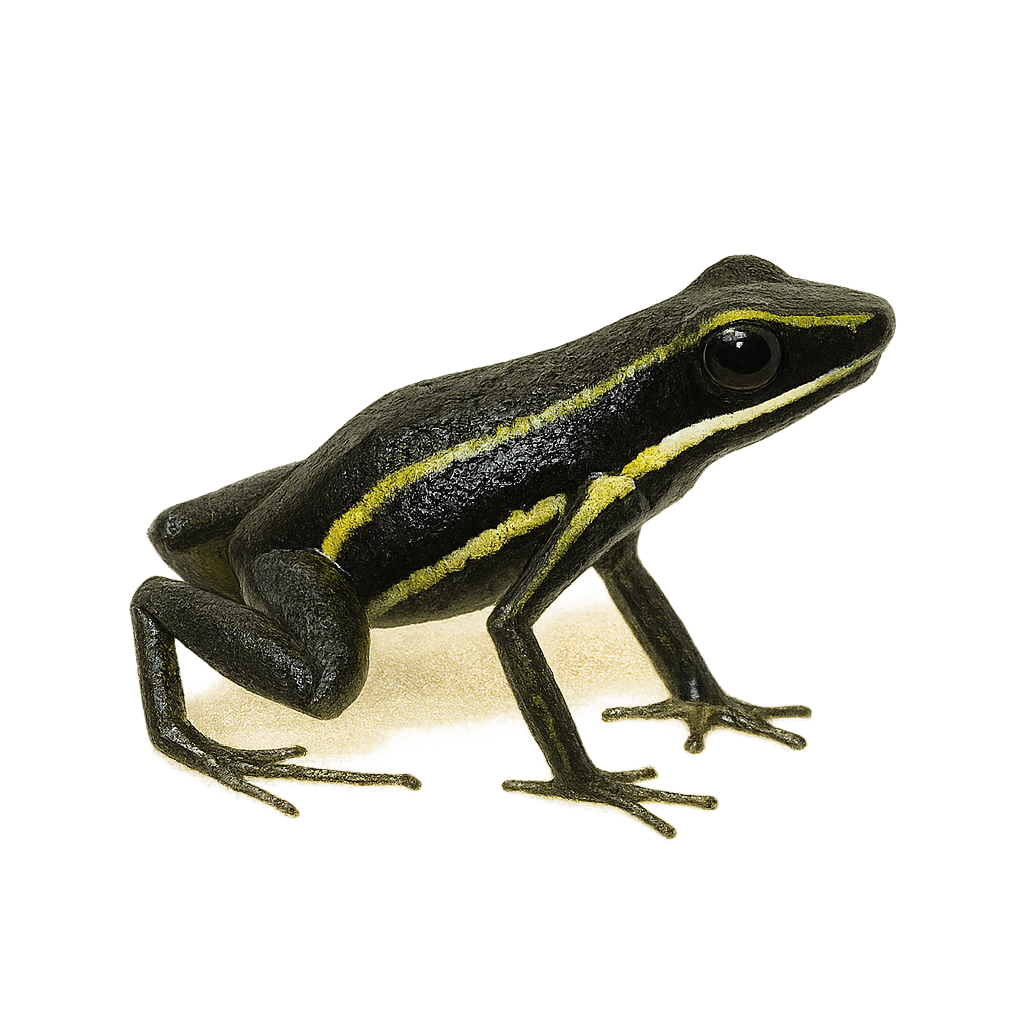Your wildlife photography guide.
Explore the nariño poison frog in detail, study its behavior, prepare your shots.
Where to observe and photograph the nariño poison frog in the wild
Learn where and when to spot the nariño poison frog in the wild, how to identify the species based on distinctive features, and what natural environments it inhabits. The WildlifePhotographer app offers tailored photography tips that reflect the nariño poison frog’s behavior, helping you capture better wildlife images. Explore the full species profile for key information including description, habitat, active periods, and approach techniques.
Nariño Poison Frog
Scientific name: Epipedobates narinensis

IUCN Status: Least Concern
Family: DENDROBATIDAE
Group: Amphibians
Sensitivity to human approach: Suspicious
Minimum approach distance: 2 m
Reproduction period: April to May
Incubation: 10–14 jours
Births: May to June
Habitat:
humid rainforests, dense undergrowth, marshy areas
Activity period :
Primarily active during the day, with peak activity in the morning and late afternoon.
Identification and description:
The Nariño Poison Frog, or Epipedobates narinensis, is a brightly colored and toxic frog species native to the humid rainforests of Colombia. Known for its vivid skin and distinctive patterns, it serves as a warning to potential predators. This frog typically measures between 2 and 3 cm in length. It is notable for its ability to secrete toxic alkaloids through its skin, a feature that protects it from predators. It primarily inhabits dense, humid undergrowth, where it feeds on small insects. The Nariño Poison Frog plays a crucial role in the ecosystem by regulating insect populations and serving as a bioindicator of habitat health.
Recommended lens:
Macro – adjust based on distance, desired framing (portrait or habitat), and approach conditions.
Photography tips:
To photograph the Nariño Poison Frog, it is advisable to use a macro lens to capture the details of its colorful skin. Approach slowly and avoid sudden movements to prevent scaring it. Natural light is ideal, but a diffused flash can be used to highlight the vivid colors. Be patient and wait for the frog to move naturally to capture dynamic shots. Ensure you respect its habitat by avoiding disturbing the surrounding vegetation.
The WildlifePhotographer App is coming soon!
Be the first to explore the best nature spots, track rutting seasons, log your observations, and observe more wildlife.
Already 1 432 wildlife lovers subscribed worldwide

